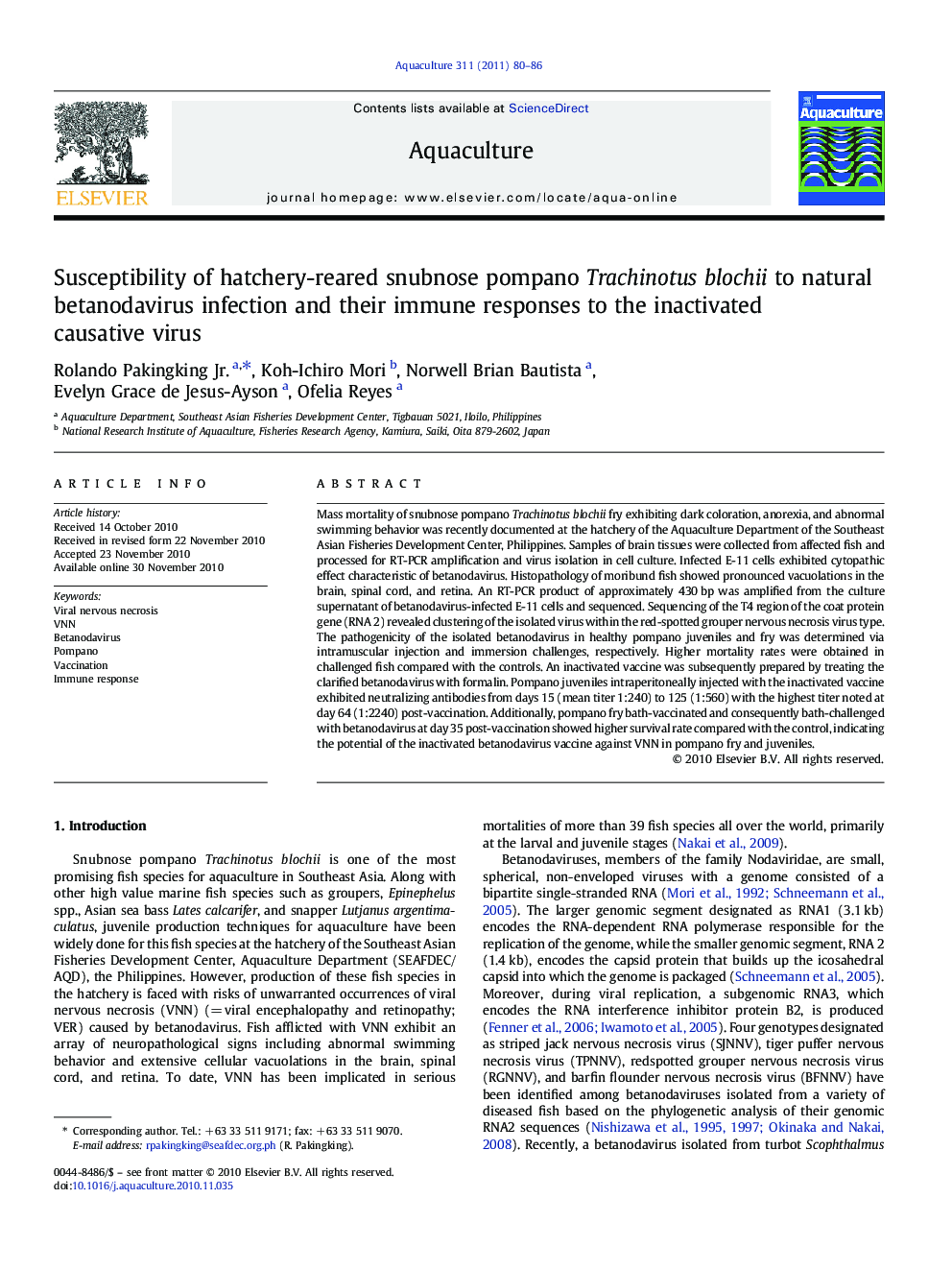| Article ID | Journal | Published Year | Pages | File Type |
|---|---|---|---|---|
| 8495985 | Aquaculture | 2011 | 7 Pages |
Abstract
Mass mortality of snubnose pompano Trachinotus blochii fry exhibiting dark coloration, anorexia, and abnormal swimming behavior was recently documented at the hatchery of the Aquaculture Department of the Southeast Asian Fisheries Development Center, Philippines. Samples of brain tissues were collected from affected fish and processed for RT-PCR amplification and virus isolation in cell culture. Infected E-11 cells exhibited cytopathic effect characteristic of betanodavirus. Histopathology of moribund fish showed pronounced vacuolations in the brain, spinal cord, and retina. An RT-PCR product of approximately 430Â bp was amplified from the culture supernatant of betanodavirus-infected E-11 cells and sequenced. Sequencing of the T4 region of the coat protein gene (RNA 2) revealed clustering of the isolated virus within the red-spotted grouper nervous necrosis virus type. The pathogenicity of the isolated betanodavirus in healthy pompano juveniles and fry was determined via intramuscular injection and immersion challenges, respectively. Higher mortality rates were obtained in challenged fish compared with the controls. An inactivated vaccine was subsequently prepared by treating the clarified betanodavirus with formalin. Pompano juveniles intraperitoneally injected with the inactivated vaccine exhibited neutralizing antibodies from days 15 (mean titer 1:240) to 125 (1:560) with the highest titer noted at day 64 (1:2240) post-vaccination. Additionally, pompano fry bath-vaccinated and consequently bath-challenged with betanodavirus at day 35 post-vaccination showed higher survival rate compared with the control, indicating the potential of the inactivated betanodavirus vaccine against VNN in pompano fry and juveniles.
Related Topics
Life Sciences
Agricultural and Biological Sciences
Aquatic Science
Authors
Rolando Jr., Koh-Ichiro Mori, Norwell Brian Bautista, Evelyn Grace de Jesus-Ayson, Ofelia Reyes,
